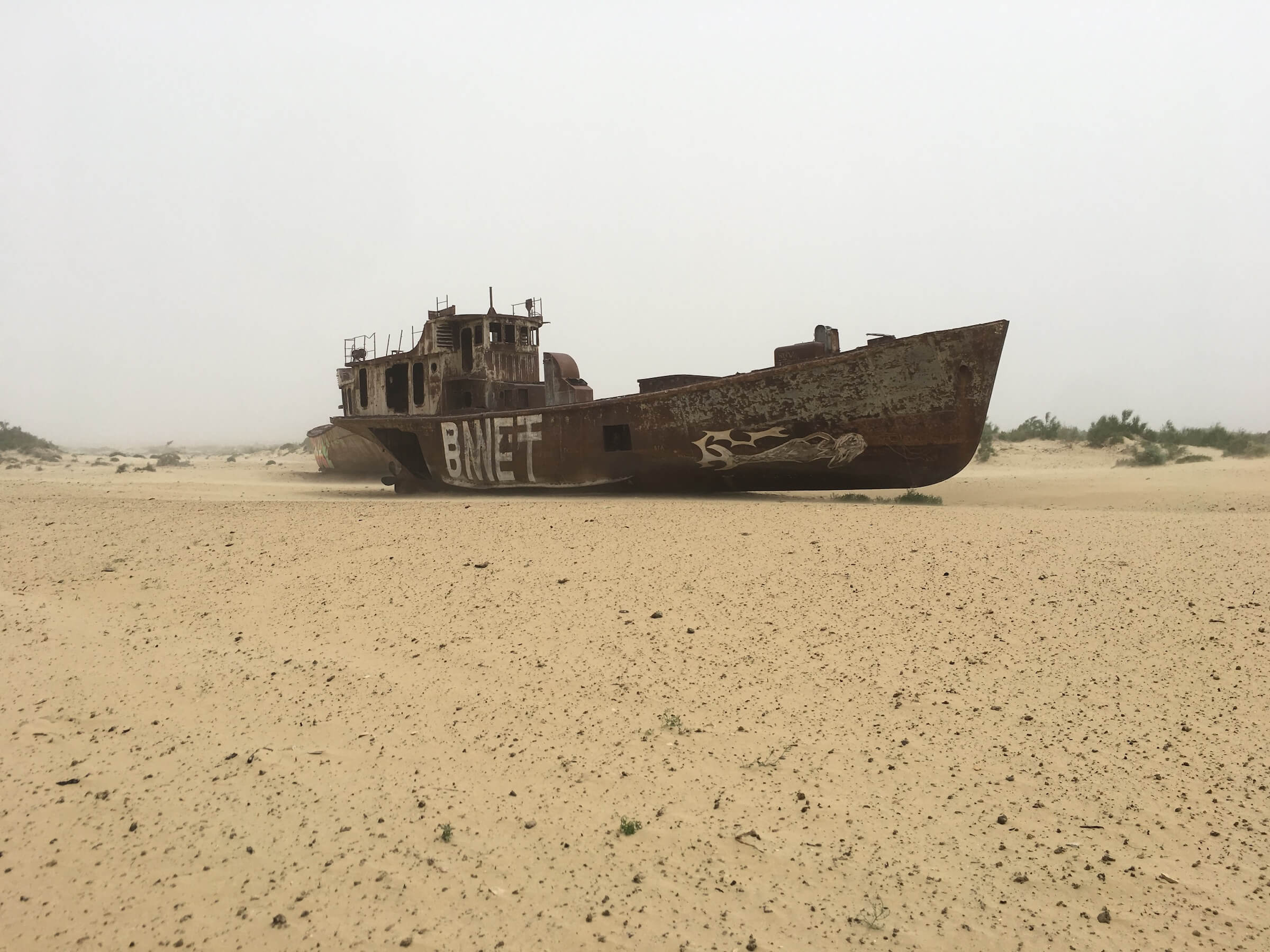Called one of the world’s worst environmental disasters, this is Aral Sea. The corpse of Aral Sea, to be correct.
It used to be one of the four largest natural lakes in the world, covering about 68,000 square km in the north-west of Uzbekistan and south-west of Kazakhstan. Nobody thought it could just dry out. The Soviet irrigation projects (diverting water away from rivers in Central Asia) that have long been suspected of causing this disaster are not enough of an explanation. My wife, who has an advanced degree in environmental science, first told me about it and that it has become sort of a mystery. She also showed me a few pictures which are enough to entice any traveler who seeks adventure. But pictures don’t prepare you for the experience of witnessing a dead sea and everything that dies with it.
The town of Moynaq, now the starting point of your dead Aral Sea adventure, was once one of the sea’s two major fishing ports, now sits 200km away from the last remains of water. 200km away. The boats that were once used for fishing by the residents of Moynaq now lie rusting outside the town to this day.
But that’s not all. With the sea went the people. Moynaq is now a ghost of its former past, buildings depleting, roads breaking, only a few old people and small children left. Salt and sand storms brew all the time everywhere. Temperatures going to the extremes, it’s either too cold or too hot. The normal has left the town.
From Nukus, only one minibus goes to Moynaq at 9am in the morning. The 4-hour journey is an excruciating exercise, partly because the scenery along the way can totally be out of a post-apocalyptic movie. The bus stops in the town for 2 hours, taking the journey back at 3pm. The whole experience just leaves you dejected.
It’s 7pm, I have just returned from Moynaq but I don’t have the energy to do anything now. That I am able to put all this in words is a feat in itself.

Leave a Reply